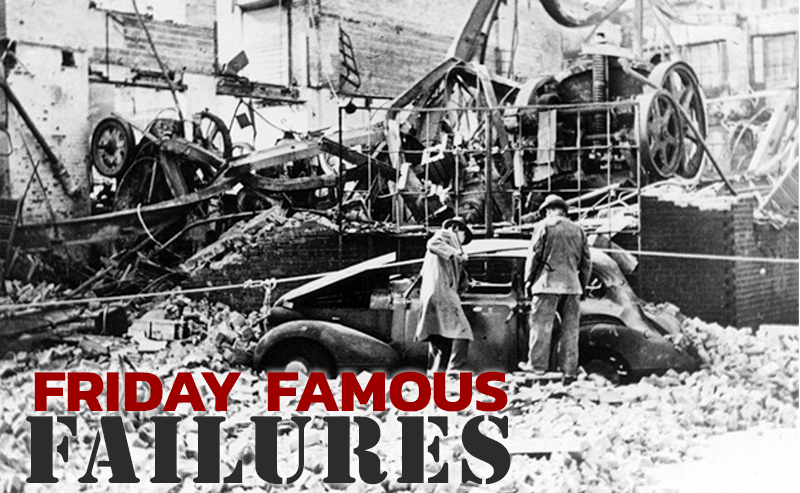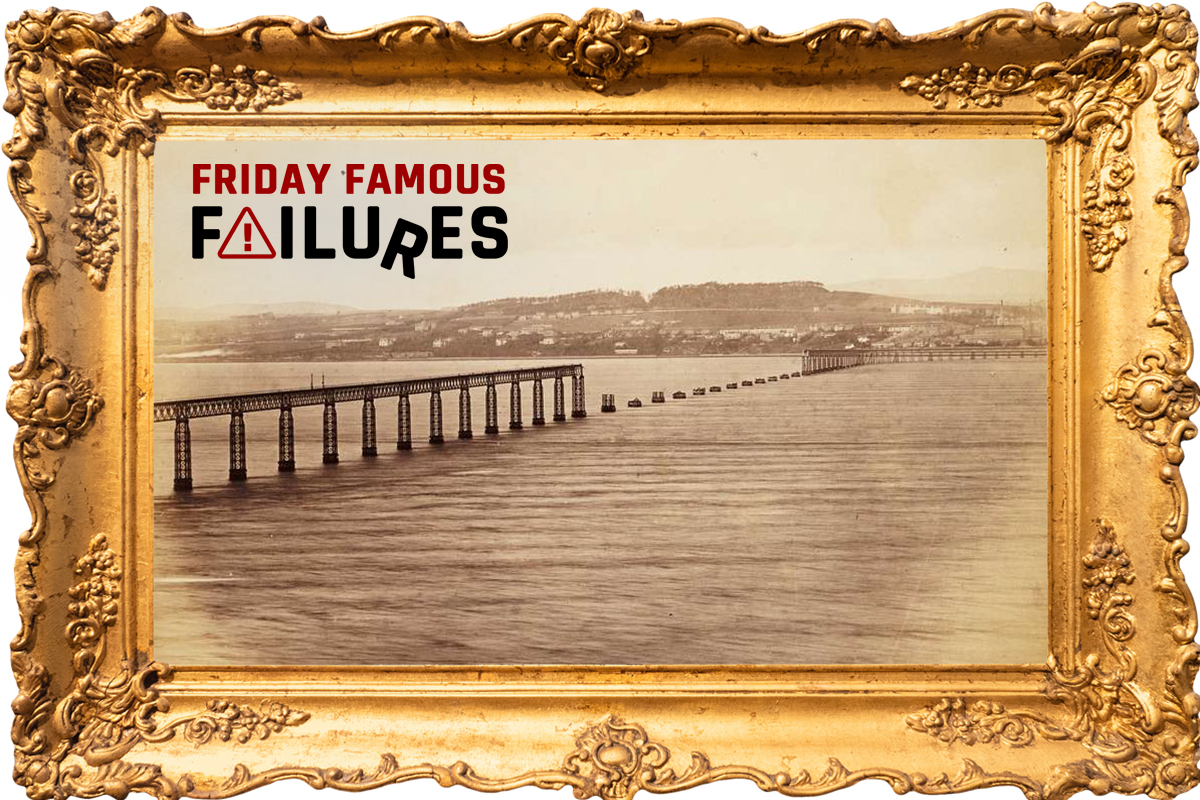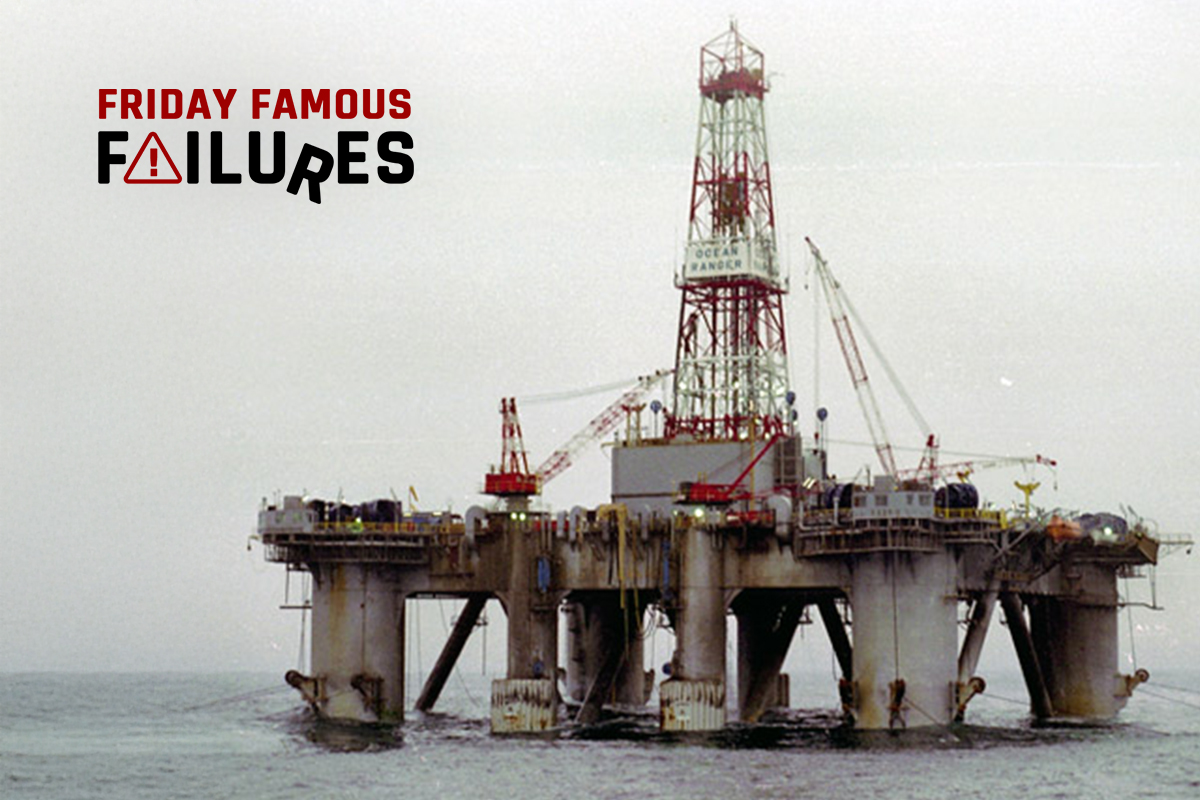On October 24, 1944, in Cleveland’s East Side, a natural gas storage facility exploded, causing so much damage that the neighborhoods affected looked little different from the scenes of heavy bombing so commonly seen in then-ongoing World War II. One survivor said, “everything… was a mass of flames. I was sure we were being bombed.”
The disaster was unprecedented. What could have gone wrong to cause so much damage?
Context and History
The East Ohio Gas Company (EOGC), a public utility selling natural gas in Cleveland, Ohio, began having difficulty meeting natural gas demand in the early 1940s, so they built a gas-liquefaction and regasification facility called “Number Two Works” (NTW) in 1940.
When natural gas in a gaseous state is converted to a liquid, it requires much less storage space. As a gas, natural gas occupies 610 more cubic feet of space than it does as a liquid. To convert natural gas from a gas to a liquid, called liquified natural gas (LNG), it must be refrigerated to minus 260 degrees Fahrenheit. LNG is stored in insulated tanks with refrigeration units.
The NTW facility initially consisted of three spherical tanks, each holding 50 million cubic feet of LNG. NTW began LNG storage in February 1942, where it was the first large-scale operation of its kind in Ohio.
The natural gas operation at NTW was successful but did not fully satisfy the growing demand for energy. The Pittsburgh-Des Moines Company (PDMC), which had designed and built the first three tanks, was contracted to design and build a fourth, 100 million cubic foot cylindrical tank.
Besides storage capacity, Tank 4 had other major differences from Tank 1-3. The cylindrical design eliminated the need for support girders which would be required to support the lower half of a spherical tank, reducing the steel required (a critical war material) by 100 tons. Also, tanks 1-3 had cork insulation (another critical war material), but PDMC specified rock-wool insulation for tank 4. The completed tank entered operation at NTW in March 1943.
When Tank 4 was first filled, the inner steel wall cracked due to uneven cooling. It was repaired and put into service, but the uneven cooling issues continued: neighborhood air-raid wardens witnessed and reported to EOGC frequent “frosting” on tank 4. To address this, EOGC and PDMC decided to eliminate the frosted areas by blowing steam on the exterior of the tank. There was no further investigation, and Tank 4 continued operations.
The Explosion and its Effects
Around 2:30 pm, witnesses reported “heavy, white, steam-like vapors creeping and rolling” near Tank 4. The first explosion occurred at 2:41 pm, shaking the ground and causing towering flames that were visible for miles. Then, at 3:00 pm, Tank 3 blew up. The heat had become so intense that the part of the tank’s steel wall and the supporting steel girders, which were located nearest to Tank 4 had melted.
The explosions released over 130 billion BTUs (British Thermal Units) of energy, causing flames that soared half a mile high and reached temperatures over 3,000 degrees Fahrenheit. The fire was so fierce that it spread rapidly and eventually consumed 29 acres of the city. On nearby roads, car tires suddenly blew from the heat radiating through the asphalt. Fragments of rock-wool insulation, soaked with natural gas, became flaming missiles that started hundreds of subsidiary fires. LNG leaked into the stormwater drains and ignited, carrying rivers of flame into other neighborhoods and starting new fires there.
Police and fire crews responded rapidly, but initially, they could only isolate the burning neighborhoods in order to protect the rest of the city. The explosion disabled much of the water supply, severely limiting the fire-fighting capability of responders. Eventually, the Coast Guard ran a 1,500-foot hose from Lake Erie to help fight the fires.
Recovery efforts were impeded by poor weather, lack of electricity, and the unsafe conditions caused by damaged buildings. Overall, 130 people were killed in the initial explosion, with 61 of those so burned as to prevent recognition. There were also 225 injuries severe enough to require hospitalization. Seventy-nine houses were destroyed completely, 35 houses were partially destroyed, and 630 people were left homeless.
Investigation and Aftermath
There were nine separate investigations of the explosions. None could determine the exact cause of tank 4’s failure, but several theories were advanced:
- The steel of Tank 4 may have failed mechanically. It was tested and found to have a “Charpy Impact” strength of 2-3 foot-pounds, which was not as strong as the 10 or more foot-pounds that PDMC had specified in its design;
- The welds used in the construction of Tank 4 were not stress relieved prior to the tank entering operations and may have failed due to fatigue;
- The rock-wool insulation, which became uneven as it settled in the void between the inner and outer walls of Tank 4, may have caused uneven cooling and additional fatigue stress on the tank;
- Poor planning when siting the tanks and building in protections such as automatic fire-fighting equipment, physical barriers to leaking gas, and the presence of nearby train tracks, which created ground vibration and may have added to the stress on the tank and the settling effect of the insulation.
It is likely that the method for addressing the “frosting” on the exterior of Tank 4 between March and October of 1944 by blowing hot steam on those sections introduced additional stress on the steel of the tank, causing or helping cause the ultimate failure of the structure. As stated in one investigation report, the tank disintegrated due to “fractures [that] were characteristic of low-temperature embrittlement,” which is the stress caused by rapidly cycling a material between relatively high or low temperatures, as was the case with the poorly insulated steel walls of Tank 4.
Additionally, all the investigations concluded that “the location of the plant was poorly chosen in view of the surroundings and potential destructiveness of the stored liquid; particularly that inadequate diking and drainage systems for spilled LNG significantly increased the destructiveness of the event.
There was a lawsuit brought against PDMC for damages resulting from the explosion, but despite the clear evidence that unsuitable or inadequate materials were used in tank 4, it was settled for the defendant. Surprisingly, none of the investigations blamed EOGC, despite the fact they were clearly responsible for:
- Failing to provide any safety features to contain LNG leaks or stop potential fires from leaks;
- Failing to install warning systems that would alert of a leak;
- Siting the LNG storage tanks such that a fire or explosion in one would cause damage and risk further explosions from the other tanks;
- Failing to warn the city and citizens of the potentially destructive nature of so much stored LNG.
This incident sparked numerous improvements in natural gas processing and storage, such as making it law that those who store LNG must meet strict criteria for the placement of these facilities relative to nearby infrastructure and neighborhoods. The activities of energy companies with regard to natural gas are currently reviewed and monitored by the Federal Energy Regulatory Commission for compliance with all laws.









It would be interesting to know if settlement of Tank 4’s foundations was considered in the investigation as having anything to do with increasing stress within the tank and contributing to the failure.
How ironic that this anniversary occurs in the same month with the pipeline explosion in Europe. Some ill-informed persons immediately jumped to a conclusion that sabotage was the cause. Inadequate welding, stress relief and lack of quality control have much higher probabilities as failure modes.
Thanks for the article. I was born in Cleveland and used to hear my parents and grandparents tell the story about this explosion.
I moved to Cleveland Ohio in 1976 to work for the then, Cleveland Electric Illuminating Company. We provided power to the EOGC I remember reading about this case.
EOGC Tank Explosion 1944
Even though the investigation could not determine the exact cause of tank 4’s failure, there appears to many failures on the part management, operations and engineering by both EOGC and PDMC.
First, with a new design for tank 4 which included cylindrical construction and rock-wool insulation versus more solid cork insulation, Thorough temperature testing should have been done to ensure consistent temperatures across entire cross section.
Second, when Tank 4 was first filled and the inner steel wall cracked due to uneven cooling, it was repaired but it was not clear if the new welds or were stress relieved prior to the tank entering operations. Also, this should have been a “red Flag” for PDMC to investigate the possibility that uneven rock-wool insulation could be the cause of the uneven cooling issues.
Third, when uneven cooling issues continued and frequent frosting was observed on tank 4, instead of EOGC taking the tank out of service and calling for an investigation by PDMC, it was decided to eliminate the frosted areas by blowing steam on the exterior of the tank. This should have been an engineering decision to ensure that there was no additional fatigue stress on the tank walls.
As stated, it is likely that the method for addressing the “frosting” on the exterior of Tank 4 between March and October of 1944 by blowing hot steam on those sections introduced additional stress on the steel of the tank, causing or helping cause the ultimate failure of the structure.
Also, engineers should have been involved in the decisions that lead to these other mitigating issues:
1. The welds used in the construction of Tank 4 were not stress relieved prior to the tank entering operations and may have failed due to fatigue;
2. The rock-wool insulation, which became uneven as it settled in the void between the inner and outer walls of Tank 4, may have caused uneven cooling and additional fatigue stress on the tank;
As stated in one investigation report, the tank disintegrated due to “fractures [that] were characteristic of low-temperature embrittlement,” which is the stress caused by rapidly cycling a material between relatively high or low temperatures, as was the case with the poorly insulated steel walls of Tank 4.
I think the tank volumes stated above are incorrect.
Tanks 1-3 contained the equivalent of 50 million cubic feet of natural gas, not 50 million cubic feet of LNG. Similarly, Tank 4 contained the equivalent of 90 million cubic feet of natural gas, not 90 million cubic feet of LNG. (Historical reports state 90 million, not 100 million.)
My first hint was the size of a spherical tank required to hold 50 million cubic feet, over 225 foot diameter, which doesn’t seem reasonable.